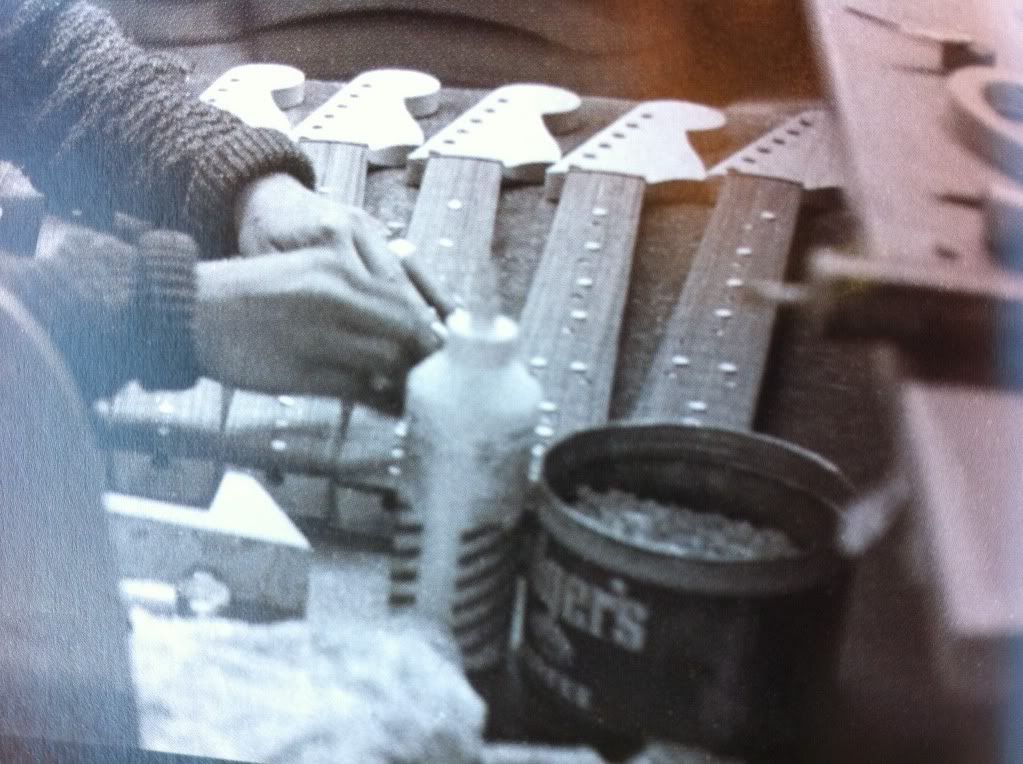Fact of the Day: Fender never used "clay"
Posted by Jonathan Beals on 2023 Mar 2nd
I occasionally get guitar makers asking for "vintage clay dots" for doing inlay on vintage recreations and restorations. It can be a bit of a back and forth because they seem to be looking for actual clay inlay, which some suppliers do offer. However, Fender never used actual clay (or anything like it), in their guitars.
Pre-CBS "vintage" Fenders used white vulcanized fiberboard (trade name: Forbon) punched into 1/4" circles. Yes, they were all white at the factory. Vulcanized fiberboard is primarily cellulose, which is a highly absorbent material. So, with time, it takes on the pigments from the rosewood and finger oils from use. It also dirties/stains from the dirt on fingers, and the smoke in the atmosphere. That is why it took on an almost coffee-stained "clay" look over time. And, they all aged slightly differently, depending on the guitar's use.
Here's a pic from the factory in 1963 where you can see the pre-stamped dots in a tin, ready for install:

At some point, luthiers and repair shops started using actual clay to replace/recreate inlay because they could find it (or stain it) to a similar colour to what was in the guitars at the time. However, since every neck would have individual aging, a perfect generic/universal colour match is kind of impossible. It has to be done on an individual basis. Alternatively, repairing/replacing inlay on a vintage neck using the original vintage accurate material would mean you'll end up with fresh looking white inlay. If you go that route, you have to find a way to stain it to match the aging of the others in the same guitar.
That was today's edition of, "Today I learned something new to me". Until next time.....
